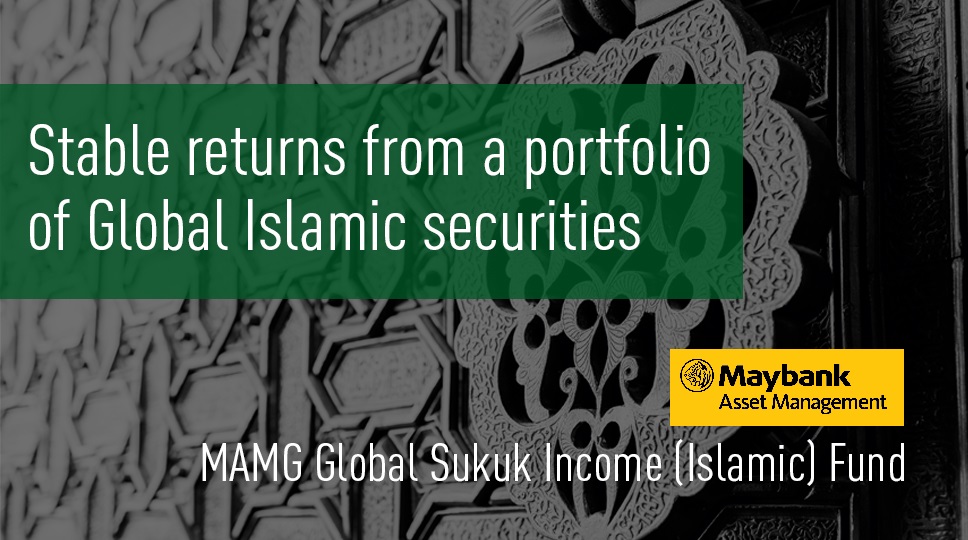|
Integrating quantitative analytics and data science to gain an unfair investment advantage By Maybank Asset Management 2 Feb 2021
Investors have always been adept at using new technologies to gain an advantage. Traders from ancient Venice would use telescopes to inspect the flags of incoming vessels, guessing the cargo they were carrying, and then buying and selling commodities accordingly. Today, the investment industry’s unending information war has been supercharged by the era of big data and artificial intelligence.
A Factor is any characteristic of a basket of securities that is important in explaining their return and risk. The following factors have been identified by academics and widely adopted by investors over the years as key exposures in their portfolios:
For our quant fund, we use a combination of over 20 proprietary factors which we term as “M-TIGER” for short – it stands for Momentum, Total Capital Management, Intrinsic Value, Growth, Expectations and Risk. The underlying factor model is also deployed regionally to help our discretionary portfolio managers and analysts make better decisions, through an investment dashboard that we developed in-house.
What are the risks of factor investing?
The combination of individual factors into a blended multi-factor fund delivers a better risk-reward ratio than any of the individual factors. This can lead to higher performance and more consistency across market cycles. Diversification across factors is a sound option for long-term investors. However, investors should note that it does not fully eliminate equity market risk. For the quant fund, risk is controlled using the following 3 main features:
We are excited to bring to market a new and innovative product. We have designed the All-Weather Quant fund to work in most equity market conditions. During normal market conditions, investors in the fund gain exposure to multiple Factors to drive investment returns. During major market downturns, the Quant Fund will allocate assets from equities into cash in an attempt to reduce downside risk. We are also developing new investment strategies using Artificial Intelligence and Machine Learning which we hope to integrate into this fund in the future.
YOU MAY ALSO LIKE THIS
Maybank Asset Management's Disclaimer
This document has been prepared solely for informational purposes with no consideration given to the specific investment objective, financial situation and particular needs of any specific person and should not be used as a basis for making any specific investment, business or commercial decisions. This document does not constitute (1) an offer to buy or sell or a solicitation of an offer to buy or sell any security or financial instrument mentioned in this document and (2) any investment advice or recommendation. Investors should seek financial or any relevant professional advice regarding the suitability of investing in any securities or investments based on their own particular circumstances before making any investments and not on the basis of any recommendation in this document.
dollarDEX's Disclaimer
All information here is for GENERAL INFORMATION only and does not take into account the specific investment objectives, financial situation or needs of any specific person or groups of persons. Prospective investors are advised to read a fund prospectus carefully or may wish to seek advice from a financial adviser before applying for any shares/units in unit trusts or making a decision to purchase an investment product. The value of the units and the income from them may fall as well as rise. Unit trusts are subject to investment risks, including the possible loss of the principal amount invested. Investors investing in funds denominated in non-local currencies should be aware of the risk of exchange rate fluctuations that may cause a loss of principal. Past performance is not indicative of future performance. dollarDEX is affiliated with Aviva but dollarDEX does not receive any preferential rates for Aviva products as a result of this relationship. Unit trusts are not bank deposits nor are they guaranteed or insured by dollarDEX. Some unit trusts may not be offered to citizens of certain countries such as United States. Information obtained from third party sources have not been verified and we do not represent or warrant its accuracy, correctness or completeness. Any advice herein is made on a general basis and does not take into account the specific investment objectives of the specific person or group of persons. We bear no responsibility or liability for any error, omission or inaccuracy or for any loss or damage suffered by you or a third party (including indirect, consequential or incidental damages) arising in any way from relying on this information.
All prices and values shown on dollarDEX.com are indicative and is based on prices that is from 2-4 dealing days ago. Fund prices are provided by a third-party and clients should not rely on these prices for decision making. dollarDEX does not guarantee any prices or valuations shown, and accepts no responsibility for their accuracy.
This information does not constitute an offer or solicitation of an offer to buy or sell any shares/units.
Information is correct as of 02/02/2021. |




